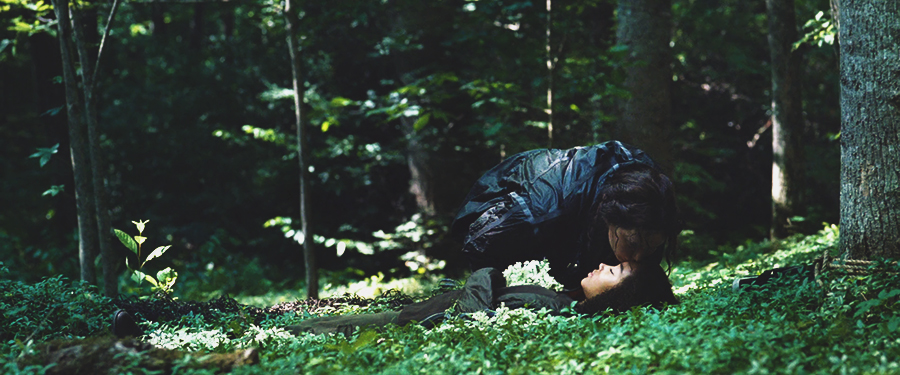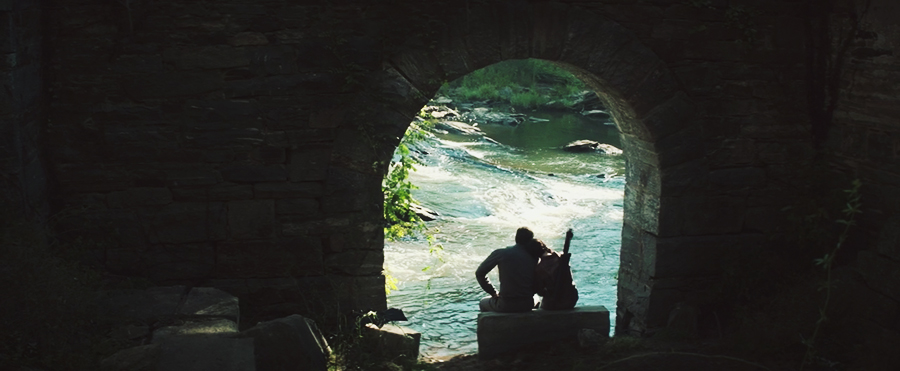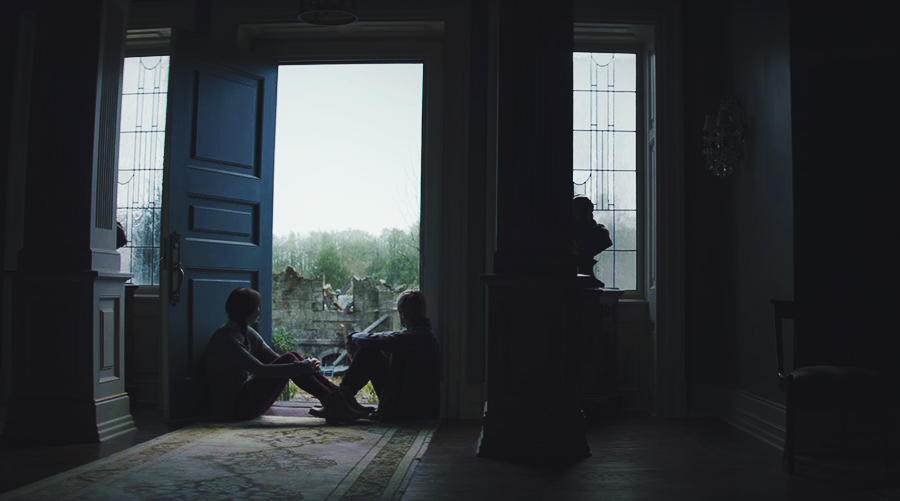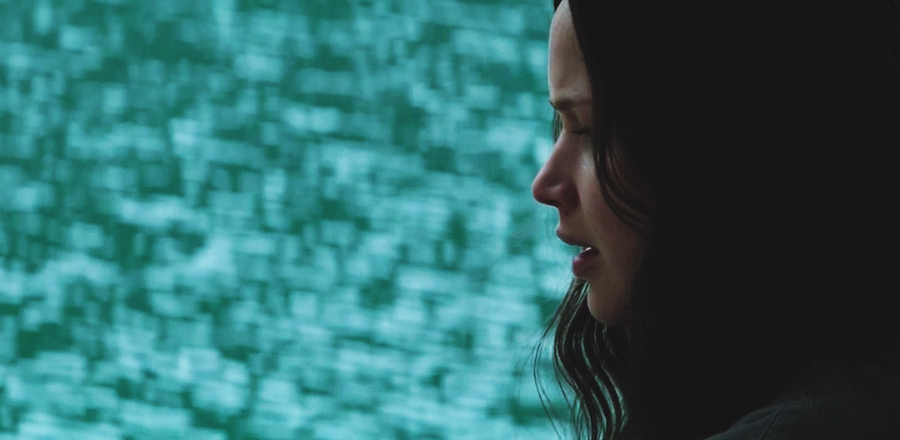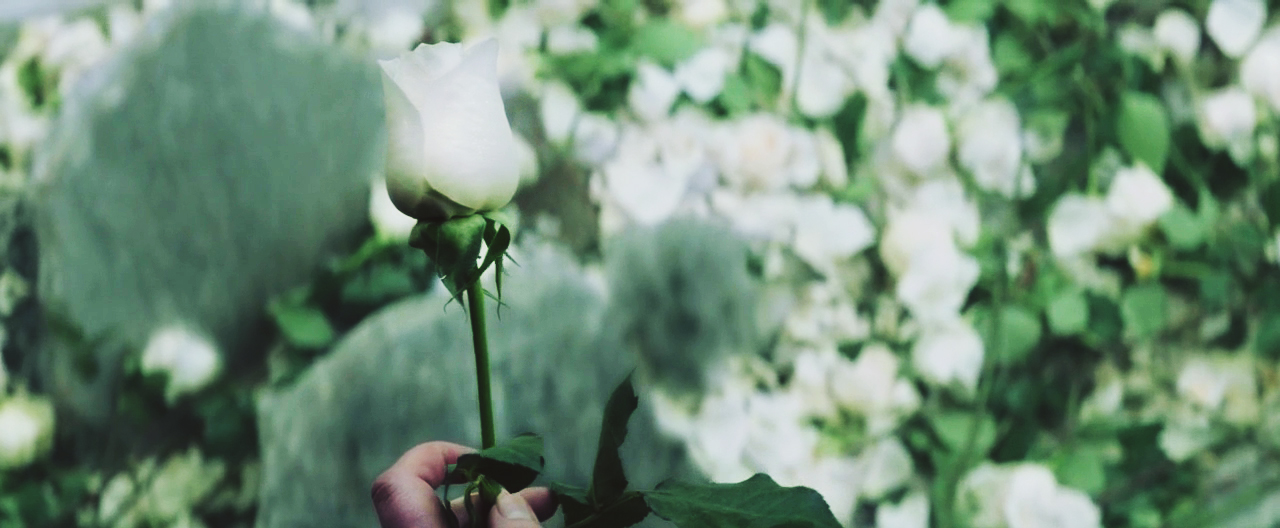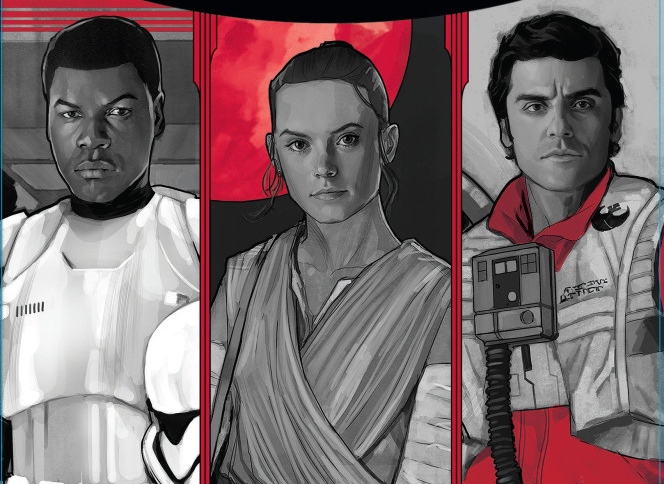The Place Where I Love You
Katniss holds Prim, encircling her little sister in the safety of her arms, and sings. Of a meadow. Of a better world where Prim can be safe and loved. The meadow, to Katniss, is beyond life; no place in their reality could offer such peace. Yet, years later, she somehow finds that meadow. Both in herself, and in the real world that surrounds her. Grown upon years of death and suffering, both Katniss and her home find life, even when she may have preferred death.
The epilogue of both the films and the novels is bittersweet, but it is filled with a kind of hope. There may never be a free happiness to be found for either Katniss or Peeta, who have suffered so much, but there’s something else for them: comfort, safety, the knowledge neither they nor their children will have to face those horrors again. They find a kind of peace.
Set My Hands on Fire
Katniss Everdeen seems a cold character, often defined by her less-positive traits: her lack of empathy, selfishness, and anger. She is emotionally distant to all but a few—and yet, so many become endeared to her. The rare times she allows someone close, when she reaches out to them physically and emotionally, are meaningful; once she lets a person in, she will likely kill—or even die—for them. It’s only those she trusts not to burn that she will touch.
From the mine explosion that kills her father to the war she becomes a figurehead of, she finds herself protecting those around her, even the people who stoke her anger more than anything else. She volunteers for Prim, is willing to sacrifice her life for Peeta, stocks up on white liquor for Haymitch, risks punishment to help her prep team imprisoned in District 13, and on and on. Most of her life is driven by the need to keep those she can safe and secure, despite her fears of getting hurt or hurting others through her actions.
A Dandelion in Spring: The Power of Support
When I first read The Hunger Games at sixteen, I hated the book. As a young girl struggling with asexuality and aromanticism, I had been plagued by love triangles or relationship drama in almost every Young Adult novel I picked up. At the time, I was hyper-sensitive to hints of love triangles in stories, and so I severely misunderstood Katniss’ character, completely missing what was actually important in her relationship with Peeta: the support he offers her as someone who genuinely cares.
The narrow thinking that creates the idea of a female character needing to choose between two male characters is a serious issue in fiction aimed at young adults. While it’s a topic for another post, this does sometimes alter people’s interpretations of the series, creating kneejerk reactions like my own initial one, and it’s a trend that needs to be questioned.
Katniss is much more than her potential love interests, the entire series being about far more than her feelings towards Peeta or Gale. Trivializing any of the characters by their level of attractiveness or romance potential entirely misses the point. Katniss’ fluctuating relationship with Peeta is a driving factor within the series, and a large part of the woman she becomes.
Start With What You Know Is True: Mental Health in The Hunger Games
In the real world, mental illnesses affect millions of people, and yet there’s often a silence surrounding the issues, brought on by social stigmas and a lack of education on mental health. Depression, post-traumatic stress disorder, and anxiety and panic disorders are prevalent within The Hunger Games, experienced by Katniss Everdeen and those around her. The trilogy highlights just how much trauma can affect people, especially the young adults and children manipulated by those much older.
While the novels are far more adept at portraying the characters’ understanding of and struggles with their respective illnesses, the films do make an effort. The opening scene of Catching Fire, where Katniss hallucinates another tribute from the Games while hunting with Gale, visually captures the nightmares of the arena that plague Katniss, setting up the audience’s understanding of her mental state following the 74th Hunger Games. The majority of Katniss’ interior struggles, however, are found within the pages of the books.
The Bird & the Snake
“Remember who the enemy is,” Haymitch tells Katniss, moments before she is taken off to the Quarter Quell arena. Again, he reminds her as she attempts to talk down a man in District 2 holding a gun to her head; “Who is the enemy?”
The enemy, she knows, is the Capitol, and the man who embodies the so-called “beating heart” of Panem: President Snow. Where she is the symbol of freedom, he is the symbol of an oppressive system.
When Katniss first meets the President at the presentation of the victors, she understands instantly that he knows she is a threat, that she is the reason the Games and the Capitol were undermined. In the film, he seems to come across softer, commenting on her mockingjay pin and telling her that her district must be proud.
This softness and civility, we know, is a ruse. His eyes, she notes in the novel, are “as unforgiving as a snake’s” as he crowns her. What Katniss doesn’t realize at the time is how alike the two are, and just how much they will come to understand each other.
An Incomplete Ranking of 2015 STAR WARS Literature
For someone who has fully embraced the new canon of Star Wars, this year has been a great year for reading. For the past two years I’ve been slowly making my way through the now-Legends novels chronologically (though the X-wing series got pushed ahead, for obvious reasons), and I can definitely say the ratio of books I’ve enjoyed to those I’ve slogged through has been much higher with the new stuff than the old EU.
That’s not to say I don’t love what I’ve read of the old novels, but I absolutely adore some of the newer books, so much so that two of them have become two of my favourite books ever, something that none of the old EU books have managed to do so far. In fact, that list is damn hard to get onto, because I dislike almost everything I read.
Protip: never suggest I read your favourite book, because odds are I will hate it and will pick apart all the reasons I think it’s awful right before your very eyes. (I’m so sorry, friends who like The Name of the Wind.)
